Chapter 2 (2.1-2.3)
1/52
There's no tags or description
Looks like no tags are added yet.
Name | Mastery | Learn | Test | Matching | Spaced |
|---|
No study sessions yet.
53 Terms
What is a Limit?
The value that a function approaches as the input approaches a specified point
As x is approaching the value of “c” what is the y (output) value?
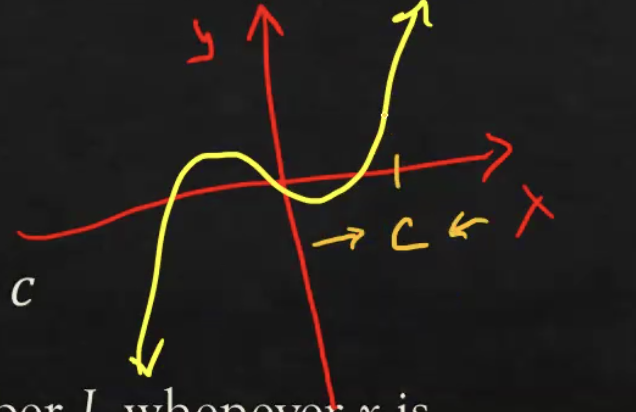
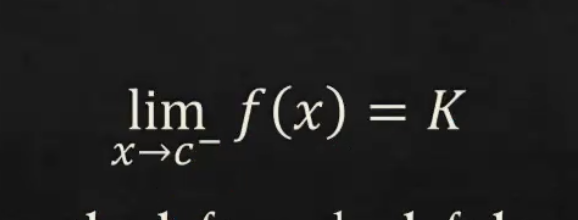
What is this Limit called?
What is the left-hand limit? “→” From negative infinity to value
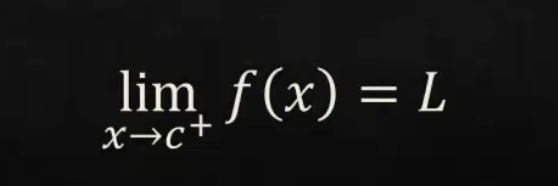
What is this Limit called?
What is the right-hand limit? “←” From positive infinity to value
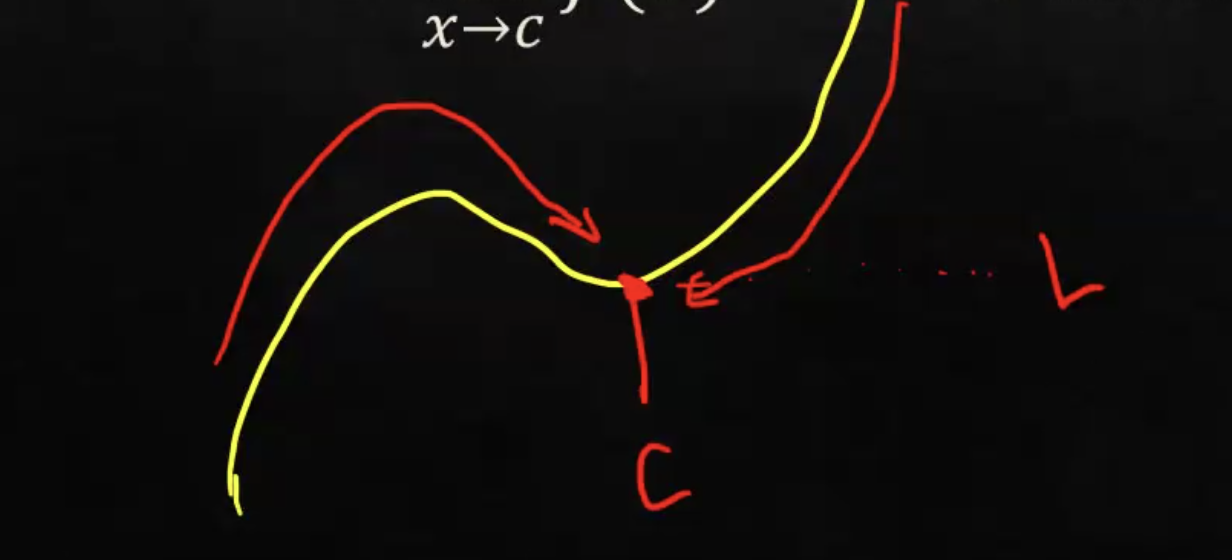
What is this called?
A Two-Sided Limit
What is a Two-Sided Limit?
When both limits from the right and left are equal.
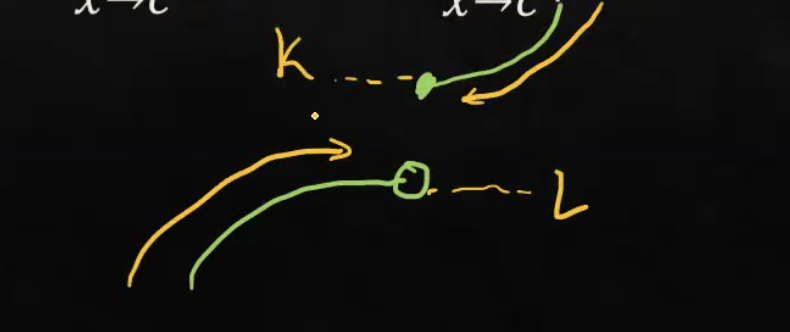
Is this a two-sided limit?
No both sides are at a different value.
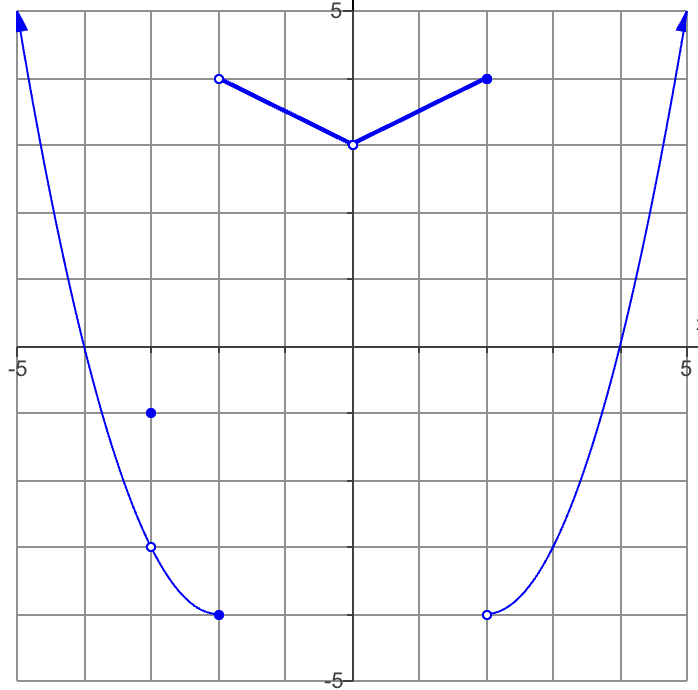
Find the limit of x→-2^+
Approaching from the right (look for positive numbers). cause it’s positive)
The answer: 4
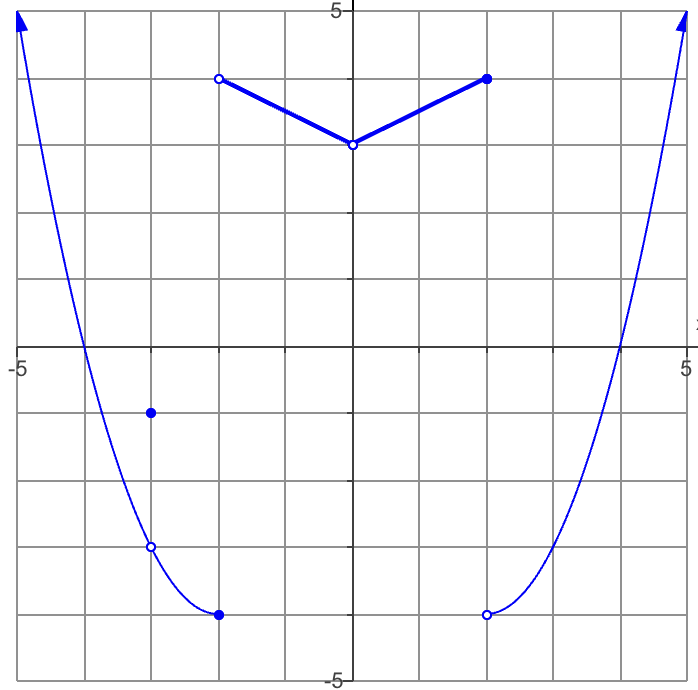
Find the limit of x→-2^-
Approaching from the left (look for negative values)
Answer: -4
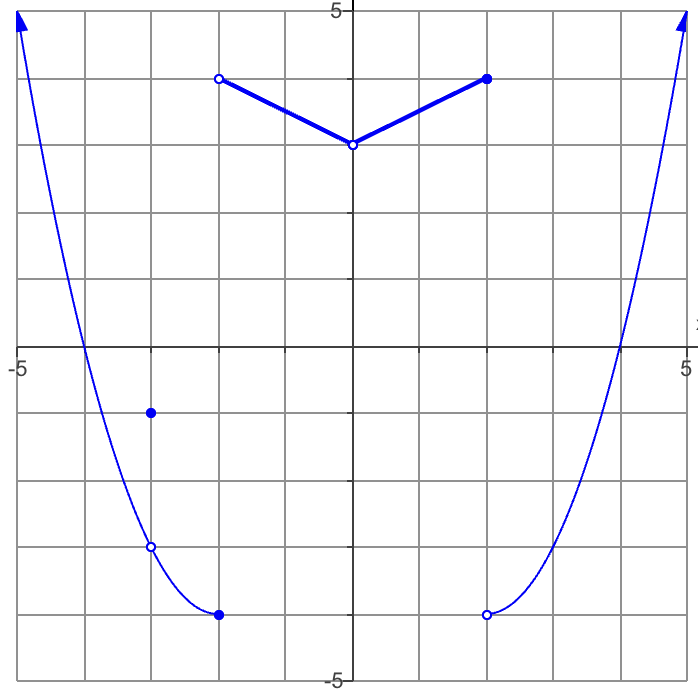
Find the limit of x→-2
Since it has no positive or negative sign attached, this is asking for the Two-Sided Limit.
Since they are different values, no two-sided limit
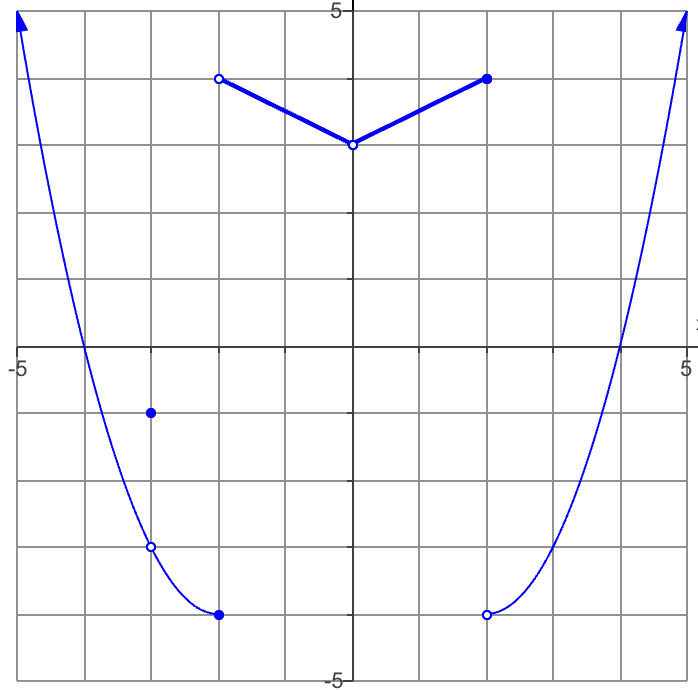
Find the function value f(-2)
! look for the closed circle!
= -4
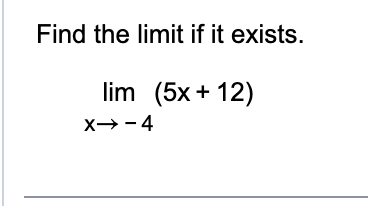
Evaluate the expression
Move the 5 over
5Lim x (x→-4) + Lim12 (x→-4)
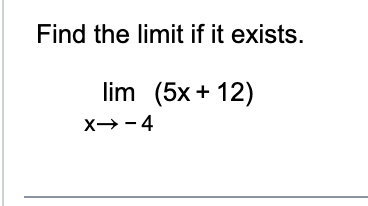
Find the Limit of: 5Lim x (x→-4) + Lim12 (x→-4)
5(-4) +12 =-8

Solve:
f(x) = -3
x=1
g(x)=2
5-(-3)/1+2= 8/3

A) Lim→0+
6+(0)²
= 6

B) Lim →0-
6-(0)²= 6

C) Lim→0
= 6

A) Lim x→5
Factor 4x²-19x-5:
4x-5: -20, find two values that multiply to -20 and add -19: 1 and -20
(4x²+x)-(20x+5) → x(4x+1) -5(4x+1) → (4x+1)(x-5)
Factor x²+11x-80: (x+16)(x-5)
A) Both (x-5)s cancel out: (4x+1)/(x+16)
4(5)+1/5+16 = 21/21=1

B) Lim x→0
Use (4x+1)/(x+16)
4(0)+1/0+16= 1/16

C) Lim x→1
Use (4x+1)/(x+16)
4(1)+1/1+16= 5/17
Infinite Limits
These are infinite limits
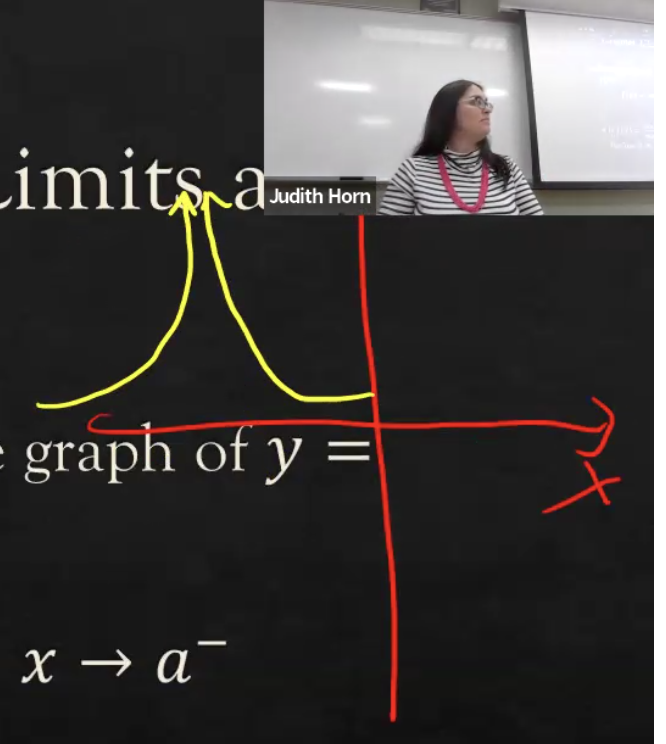
Vertical Asymptote
These are vertical lines that a graph approaches but never touches or crosses as the input (usually x) gets very close to a certain value.
Find the VA:
(x+3)(x-5)/(x+1)(x-1)(x+7)
The vertical asymptotes occur where the denominator equals zero, so set (x+1)(x-1)(x+7) = 0, which gives x = -1, 1, -7.
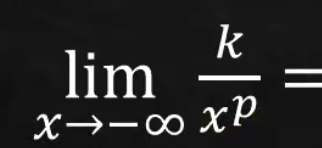
=0
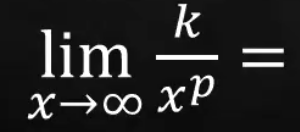
=0
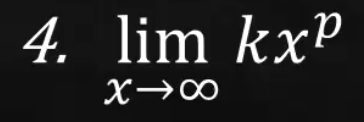
= positive infinity

= both positive and negative infinity
Lim x→infinity: -7x² =
a negative infinity
Lim x→infinity: 7x² =
a positive infinity
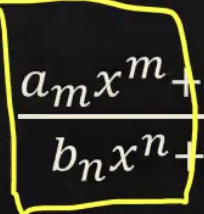
m>n
No horizontal asymptote
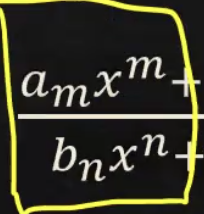
n>m
y=0

n=m
divide by the leading coefficients
Write the equation of a line with slope being -2 and points (3,5)
y-y1=m(x-x1)
y-(5)=-2(x-(3)
y-5=2x+6
y=2x+11
Write y=2x+11 in standard form \
2x+y=11
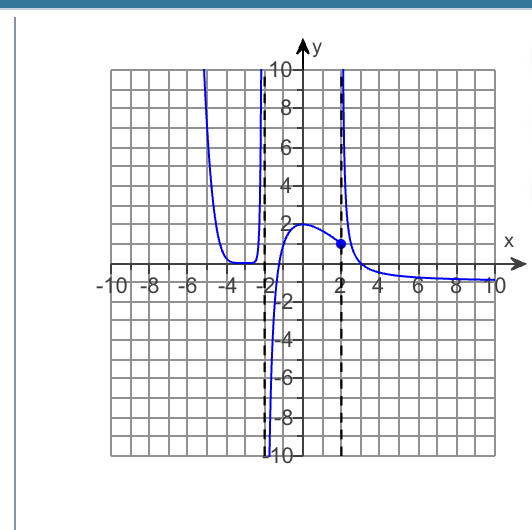
Find Lim f(x) x→ infinity
! Find whatever value the line is getting closest to as it’s moving towards infinity!
x= -1
6x/x-8
A) Find lim x→8⁻
Coming from the left : negative infinity
6x/x-8
B) Find lim x→8^+
Coming from the right : positive infinity
6x/x-8
C) find lim x→8
It doesn’t exist as there are differnet values

(A): f(-6)
Plug equation into “y=”
See what value you get at -6: -0.042

(B): f(-12)
plug equation into “y=”
See what value you get at -12: -0.018

(C): Negative infinity
plug equation into “y=”
See what value you are getting to as you get move negative, which is “zero”

(A) Horizontal Asy
Both the num and dem have the same degrees: (2/1=1): y=2

(B) Vertical Asy
X+4 =0, Vertical Asy: y=-4
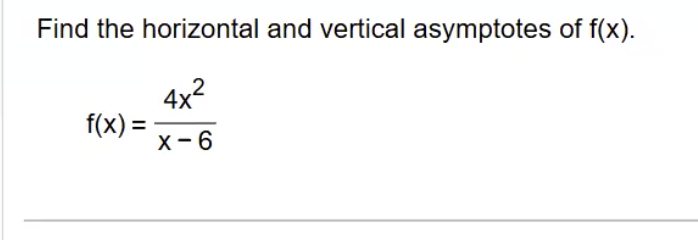
(A) Horiztontal
Higher degree on num, top kills twink y=0
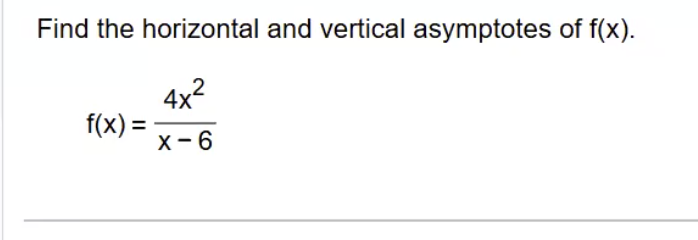
(B) Vertical
x-6=0
VA: x=6

Describe right end-behavior
Look at the leading terms
There both positive (when dividing by two positives: you get a positive)
Therefore, as you're going to positive infinity, the function is going to be positive infinity as well
! if it was -40/19: it would be heading towards negative infinity ! (Negative / Positive: Negative)
A function is continuous when...
its on an open interval
Open interval
unfilled circles: ( )
Closed interval
filled circles: [ ]
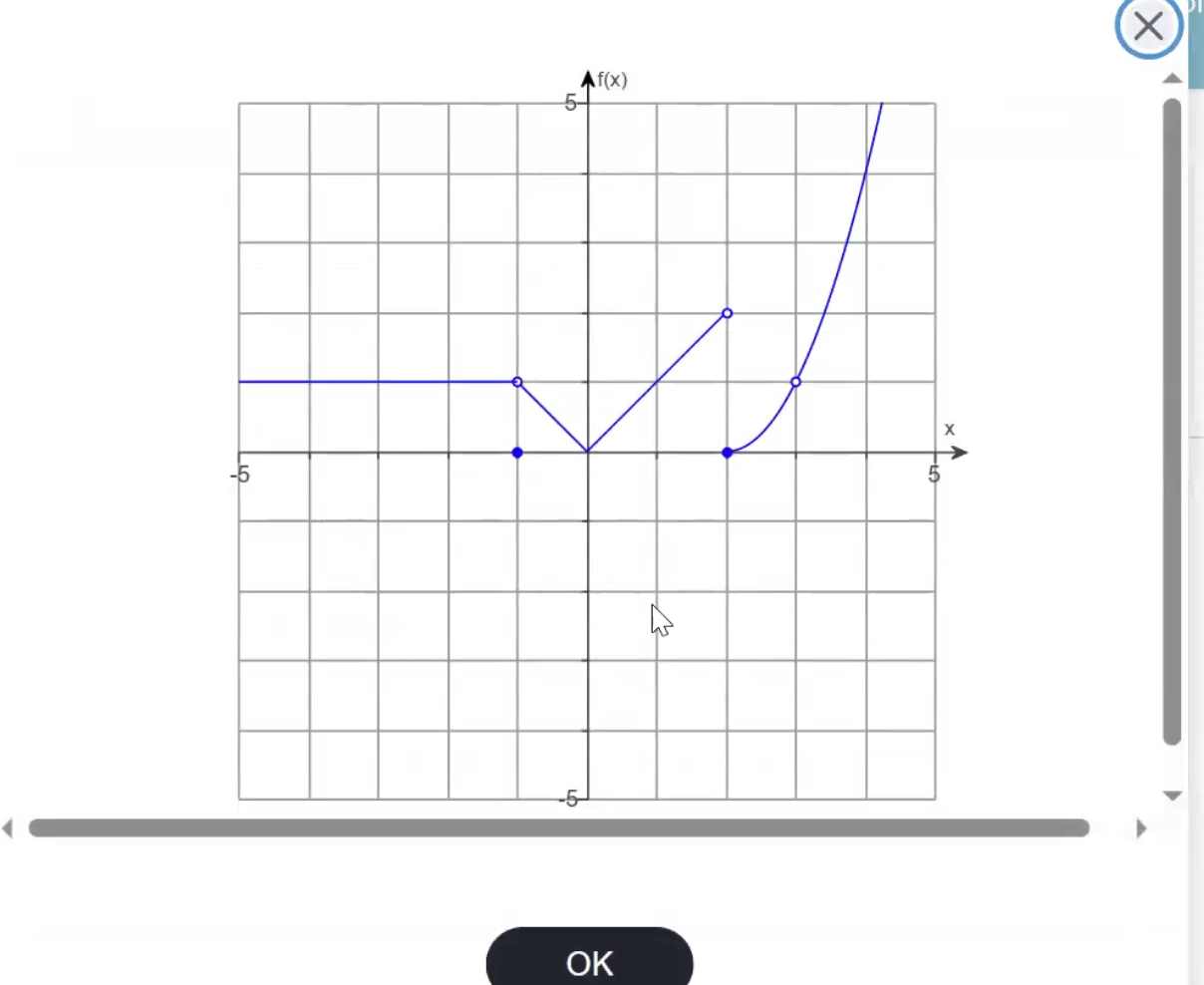
Coming in from the right: What is the estimated value? At f(-1.1)
Its approaching one

Determine where the function is continuous
This is a polynomial
(-infinity, positive infinity)
Use a sign chart for: x²-5x-36<0, write in inequality and interval form
Plug the equation into “y=” and find the zeros (9,-4)
Notice how between those values (-4 to 9) its all negative or less than zero
Inequality (less than zeros and values between -4 and 9) → -4<x<9
Interval: (-4,9)

Notes for this problem
Since its square root its going to greater than or equal to zero
For interval and inequality notation: Its going to involve brackets
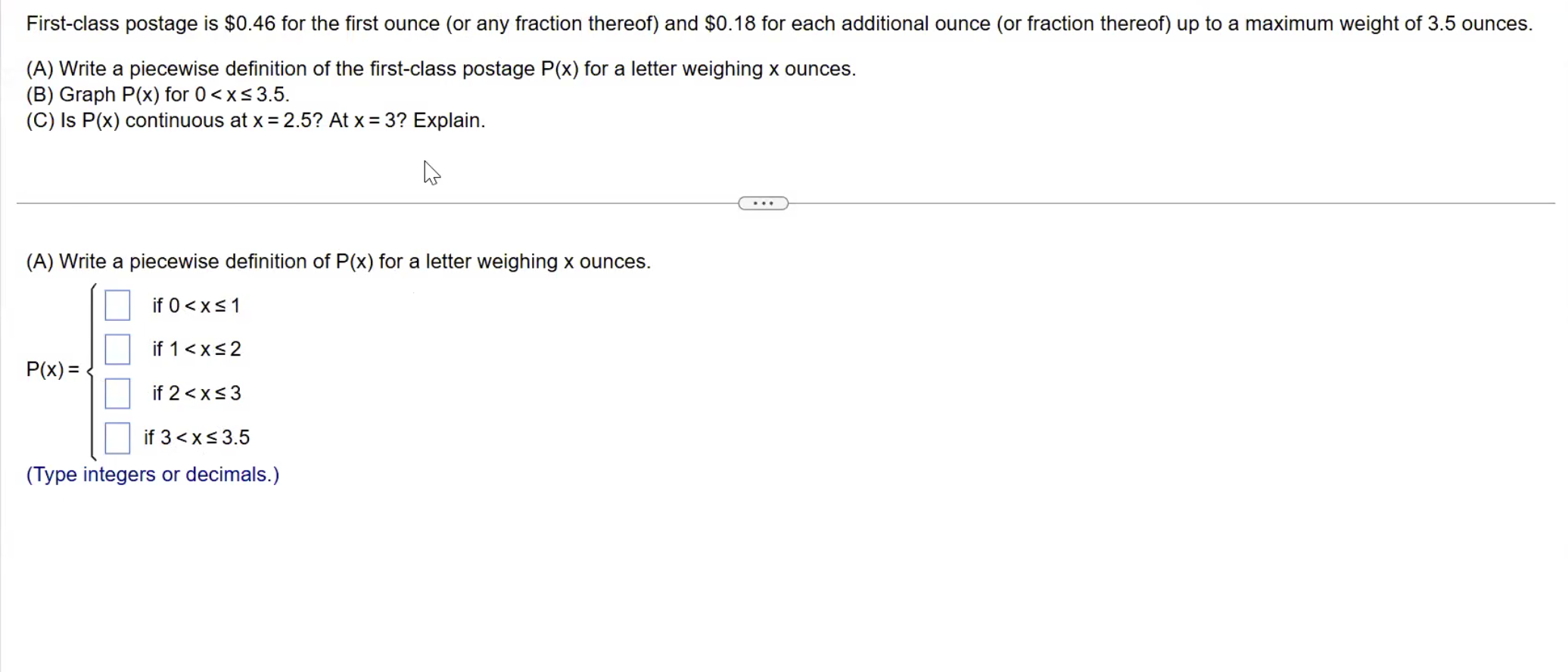
(A)
The starting point is 0.46
You keep on adding 0.18, because itadditional to new answer
0.46
0.46+ 0.18= 0.64
0.64 +0.18= 0.82
0.82+ 0.18= 1